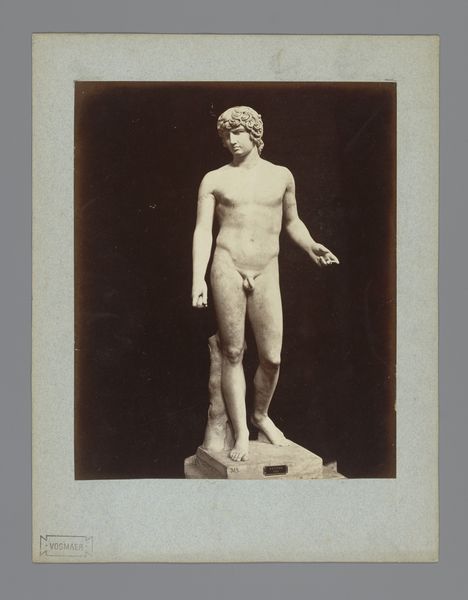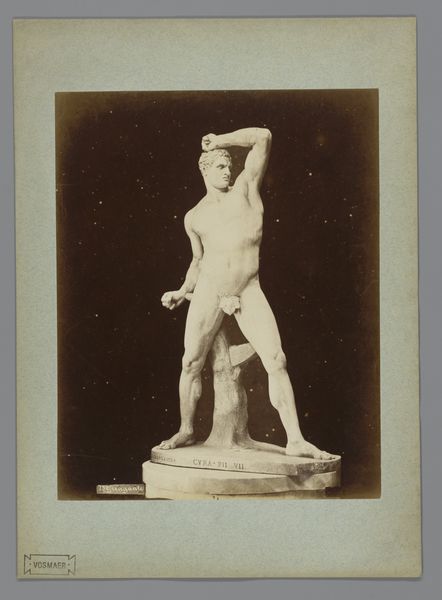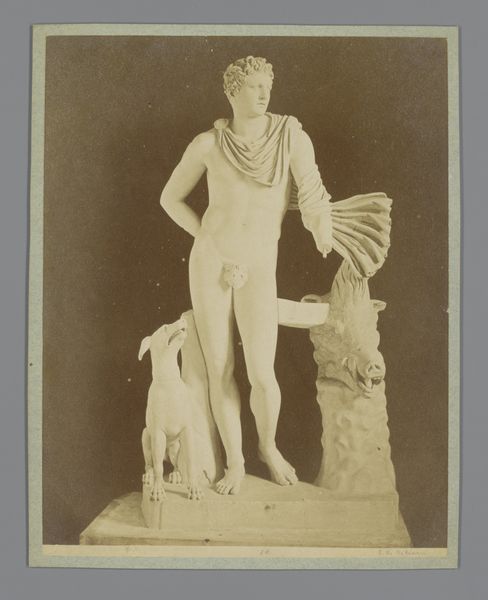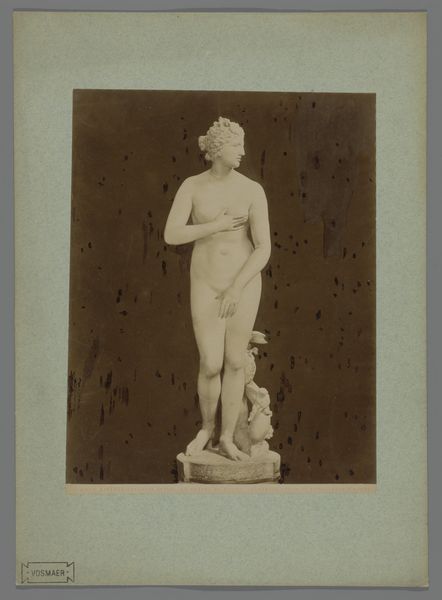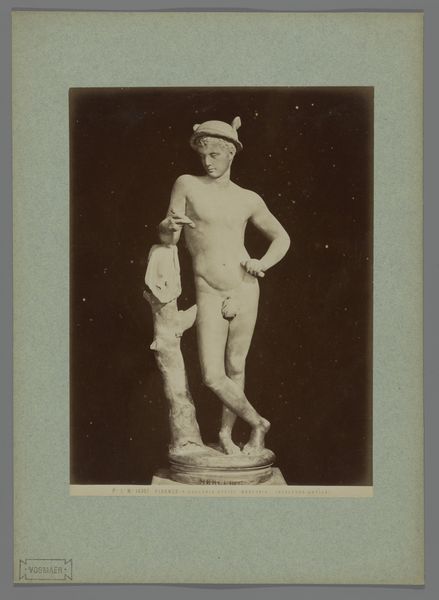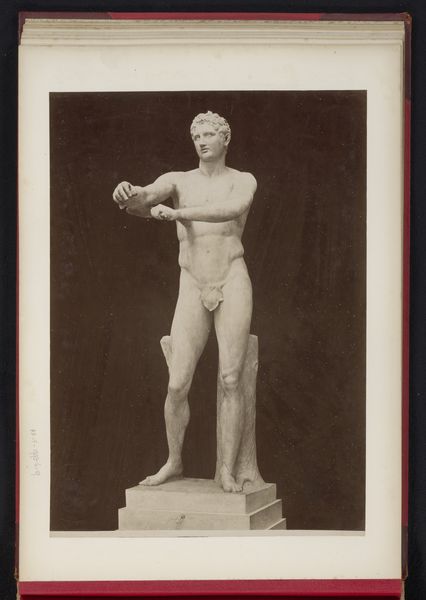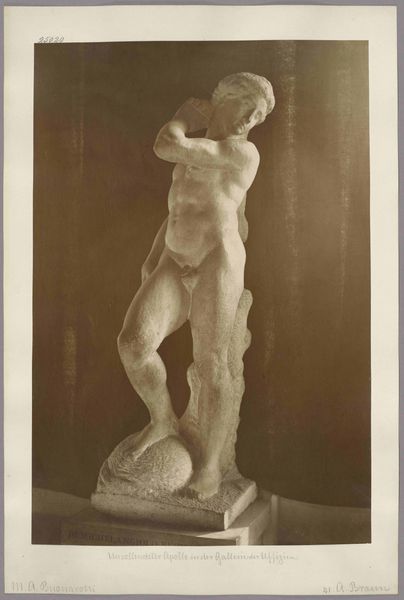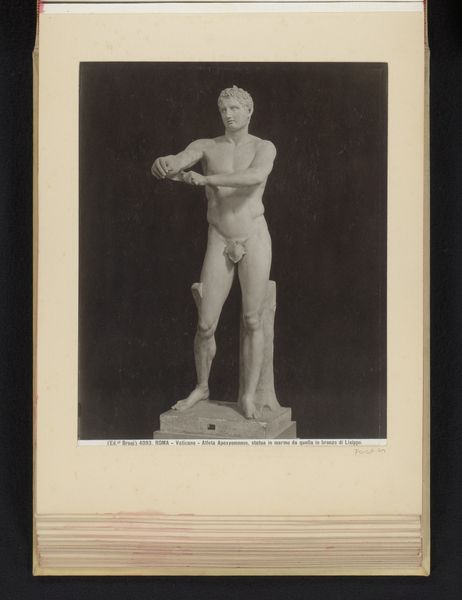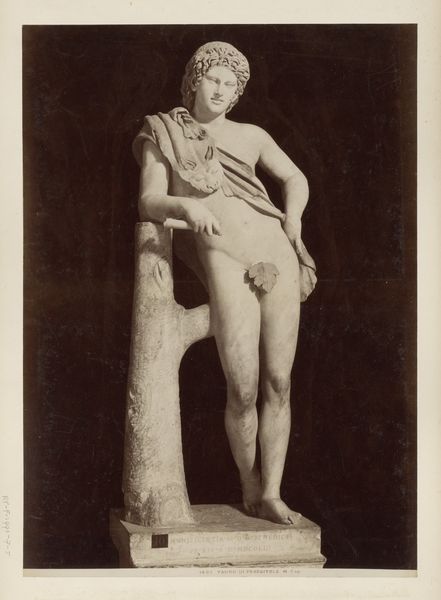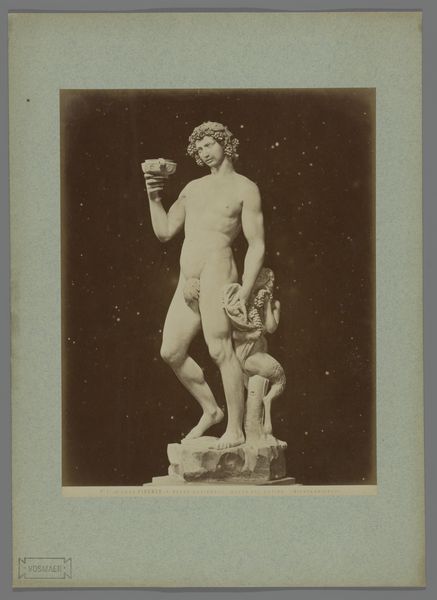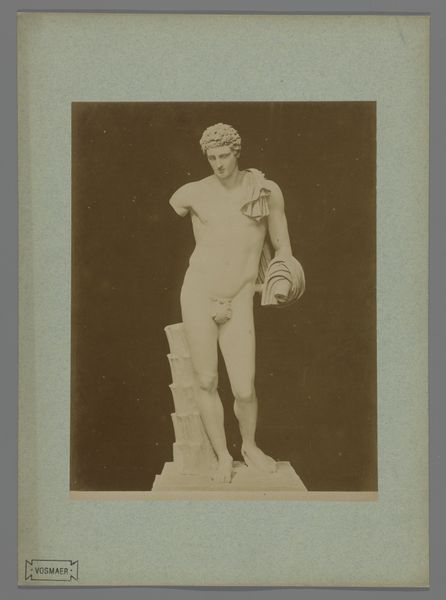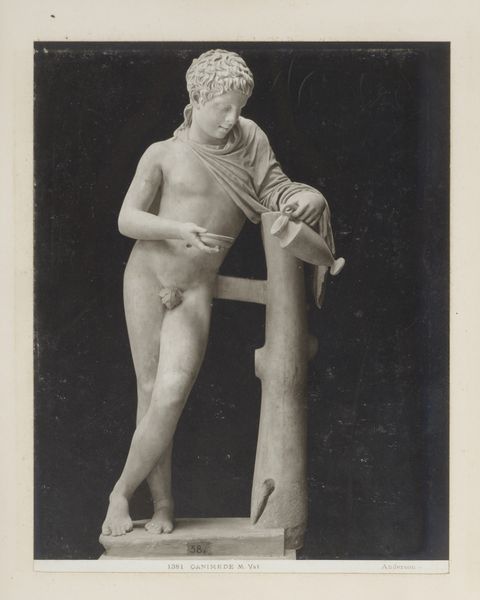
Sculptuur van de rustende satyr naar Praxiteles in de Capitolijnse Musea te Rome, Italië 1852 - 1900
0:00
0:00
fratellialinari
Rijksmuseum
photography, sculpture, marble
#
portrait
#
greek-and-roman-art
#
classical-realism
#
figuration
#
photography
#
sculpture
#
marble
#
nude
#
statue
Dimensions: height 251 mm, width 194 mm, height 259 mm, width 202 mm
Copyright: Rijks Museum: Open Domain
Curator: This photograph, taken sometime between 1852 and 1900 by Fratelli Alinari, depicts a sculpture titled "Sculptuur van de rustende satyr naar Praxiteles in de Capitolijnse Musea te Rome, Italië," rendered in marble. What are your initial thoughts? Editor: A palpable stillness. The neutral tonality lends a ghostly air to this idealized male form. His languid pose against the tree stump feels charged, yet serene. Curator: It's a fantastic example of classical idealism, resurrected in photographic form. The satyr, a symbol deeply rooted in Dionysian revelry and nature, is portrayed here in a state of repose. Think about the layers of meaning packed into a single, iconic image. Editor: Indeed. The figure's nudity, a clear visual marker for uninhibited pleasure in the satyr archetype, is complicated by his relaxed, almost pensive expression. There's a vulnerability that subverts easy readings of pure hedonism. Where do we locate agency and resistance in this symbol from the classical period? Curator: Exactly. Consider the visual language at play: the satyr, historically linked to the wild, untamed aspects of human nature, is domesticated within the frame. It seems less about disruptive, embodied joy and more about an introspective, tamed version of that energy. The tree stump further enhances that feeling of being connected to a pastoral, classical idea. Editor: The gaze is so important here too. His slightly downward glance removes any direct engagement with the viewer, reinforcing the separation of the male nude in art. The question then is, for whom is this idealized image intended? What does it tell us about desires projected onto this male body? Curator: A complex interplay, no doubt. This image, while referencing a sculpture that is, itself, an idea based on earlier ideas from Greek antiquity, opens up space for questioning how certain archetypes persist in shaping cultural narratives, both visually and psychologically. Editor: Ultimately, a fascinating visual record, a reproduction of an idealized form filtered through multiple artistic lenses that continues to spark questions about power, representation, and the enduring legacy of classical imagery in a shifting sociopolitical world. Curator: Absolutely, a window into both classical and modern perspectives, each layered and informed by different cultural assumptions.
Comments
No comments
Be the first to comment and join the conversation on the ultimate creative platform.
